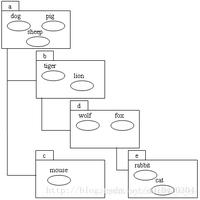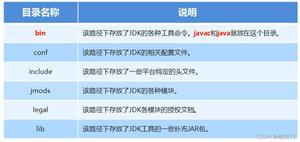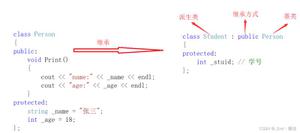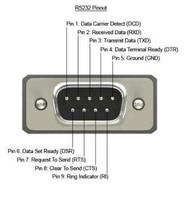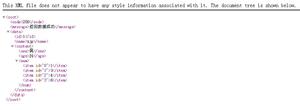详解JAVA8 函数式接口
写在前面
Java8中内置了一些在开发中常用的函数式接口,极大的提高了我们的开发效率。那么,问题来了,你知道都有哪些函数式接口吗?
函数式接口总览
这里,我使用表格的形式来简单说明下Java8中提供的函数式接口。
四大核心函数式接口
首先,我们来看四大核心函数式接口,如下所示。
| 函数式接口 | 参数类型 | 返回类型 | 使用场景 |
| Consumer | T | void | 对类型为T的对象应用操作,接口定义的方法:void accept(T t) |
| Supplier | 无 | T | 返回类型为T的对象,接口定义的方法:T get() |
| Function<T, R>函数式接口 | T | R | 对类型为T的对象应用操作,并R类型的返回结果。接口定义的方法:R apply(T t) |
| Predicate | T | boolean | 确定类型为T的对象是否满足约束条件,并返回boolean类型的数据。接口定义的方法:boolean test(T t) |
其他函数接口
除了四大核心函数接口外,Java8还提供了一些其他的函数式接口。
| 函数式接口 | 参数类型 | 返回类型 | 使用场景 |
| BiFunction(T, U, R) | T, U | R | 对类型为T,U的参数应用操作,返回R类型的结果。接口定义的方法:R apply(T t, U u) |
| UnaryOperator | T | T | 对类型为T的对象进行一 元运算, 并返回T类型的 结果。 包含方法为 T apply(T t) |
| BinaryOperator | T, T | T | 对类型为T的对象进行二 元运算, 并返回T类型的 结果。 包含方法为 T apply(T t1, T t2) |
| BiConsumer<T, U> | T, U | void | 对类型为T, U 参数应用 操作。 包含方法为 void accept(T t, U u) |
| ToIntFunction | T | int | 计算int值的函数 |
| ToLongFunction | T | long | 计算long值的函数 |
| ToDoubleFunction | T | double | 计算double值的函数 |
| IntFunction | int | R | 参数为int 类型的函数 |
| LongFunction | long | R | 参数为 long类型的函数 |
| DoubleFunction | double | R | 参数为double类型的函数 |
四大核心函数式接口
Consumer接口
1.接口说明
Consumer接口是消费性接口,无返回值。Java8中对Consumer的定义如下所示。
@FunctionalInterface
public interface Consumer<T> {
void accept(T t);
default Consumer<T> andThen(Consumer<? super T> after) {
Objects.requireNonNull(after);
return (T t) -> { accept(t); after.accept(t); };
}
}
2.使用示例
public void handlerConsumer(Integer number, Consumer<Integer> consumer){
consumer.accept(number);
}
@Test
public void test1(){
this.handlerConsumer(10000, (i) -> System.out.println(i));
}
Supplier接口
1.接口说明
Supplier接口是供给型接口,有返回值,Java8中对Supplier接口的定义如下所示。
@FunctionalInterface
public interface Supplier<T> {
T get();
}
2.使用示例
public List<Integer> getNumberList(int num, Supplier<Integer> supplier){
List<Integer> list = new ArrayList<>();
for(int i = 0; i < num; i++){
list.add(supplier.get())
}
return list;
}
@Test
public void test2(){
List<Integer> numberList = this.getNumberList(10, () -> new Random().nextInt(100));
numberList.stream().forEach(System.out::println);
}
Function接口
1.接口说明
Function接口是函数型接口,有返回值,Java8中对Function接口的定义如下所示。
@FunctionalInterface
public interface Function<T, R> {
R apply(T t);
default <V> Function<V, R> compose(Function<? super V, ? extends T> before) {
Objects.requireNonNull(before);
return (V v) -> apply(before.apply(v));
}
default <V> Function<T, V> andThen(Function<? super R, ? extends V> after) {
Objects.requireNonNull(after);
return (T t) -> after.apply(apply(t));
}
static <T> Function<T, T> identity() {
return t -> t;
}
}
2.使用示例
public String handlerString(String str, Function<String, String> func){
return func.apply(str);
}
@Test
public void test3(){
String str = this.handlerString("binghe", (s) -> s.toUpperCase());
System.out.println(str);
}
Predicate接口
1.接口说明
Predicate接口是断言型接口,返回值类型为boolean,Java8中对Predicate接口的定义如下所示。
@FunctionalInterface
public interface Predicate<T> {
boolean test(T t);
default Predicate<T> and(Predicate<? super T> other) {
Objects.requireNonNull(other);
return (t) -> test(t) && other.test(t);
}
default Predicate<T> negate() {
return (t) -> !test(t);
}
default Predicate<T> or(Predicate<? super T> other) {
Objects.requireNonNull(other);
return (t) -> test(t) || other.test(t);
}
static <T> Predicate<T> isEqual(Object targetRef) {
return (null == targetRef)
? Objects::isNull
: object -> targetRef.equals(object);
}
}
2.使用示例
public List<String> filterString(List<String> list, Predicate<String> predicate){
List<String> strList = new ArrayList<>();
for(String str : list){
if(predicate.test(str)){
strList.add(str);
}
}
return strList;
}
@Test
public void test4(){
List<String> list = Arrays.asList("Hello", "Lambda", "binghe", "lyz", "World");
List<String> strList = this.filterString(list, (s) -> s.length() >= 5);
strList.stream().forEach(System.out::println);
}
注意:只要我们学会了Java8中四大核心函数式接口的用法,其他函数式接口我们也就知道如何使用了!
写在最后
最后,附上Java8新特性核心知识图,祝大家在学习Java8新特性时少走弯路。
以上是 详解JAVA8 函数式接口 的全部内容, 来源链接: utcz.com/z/341659.html

